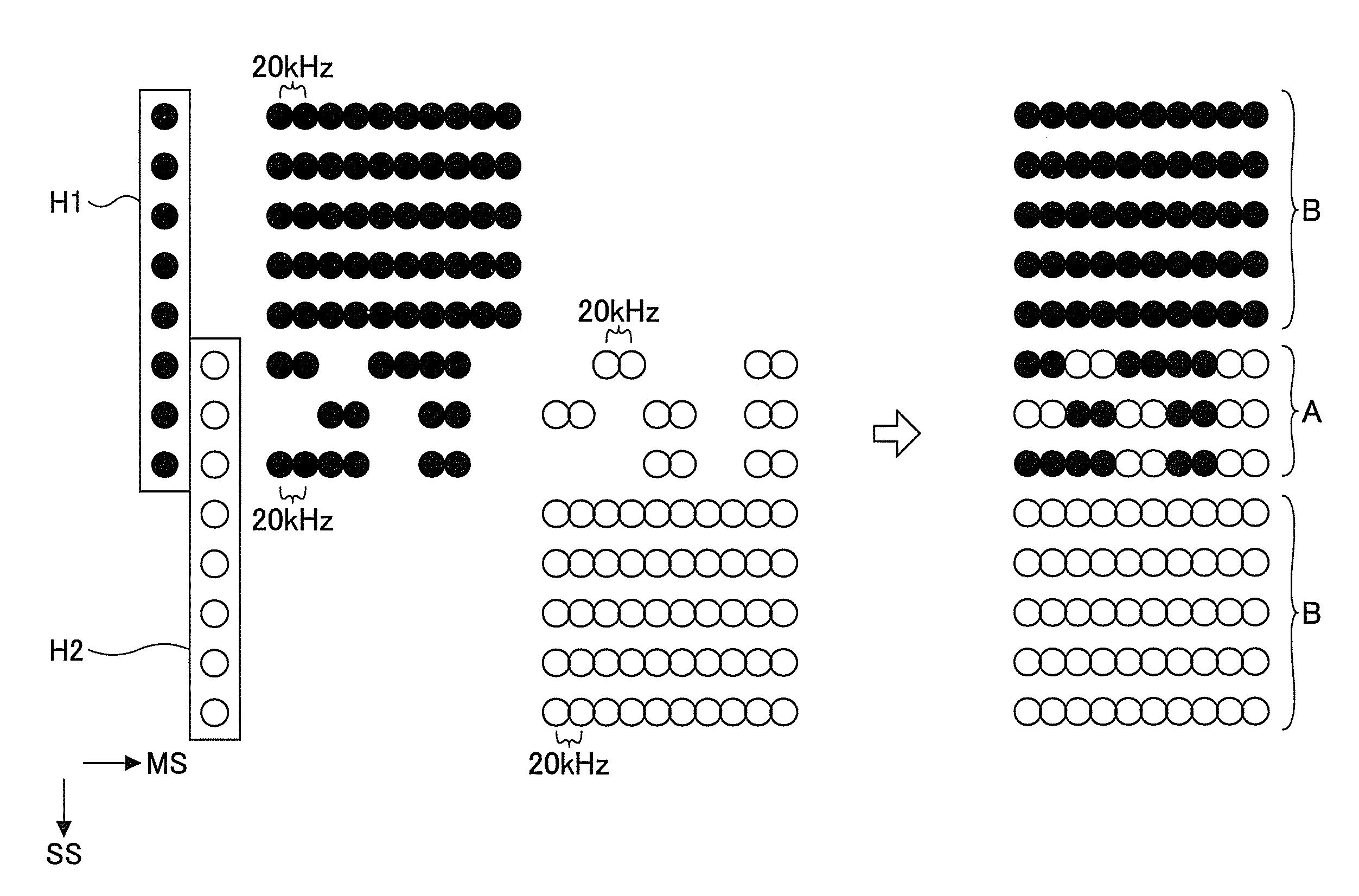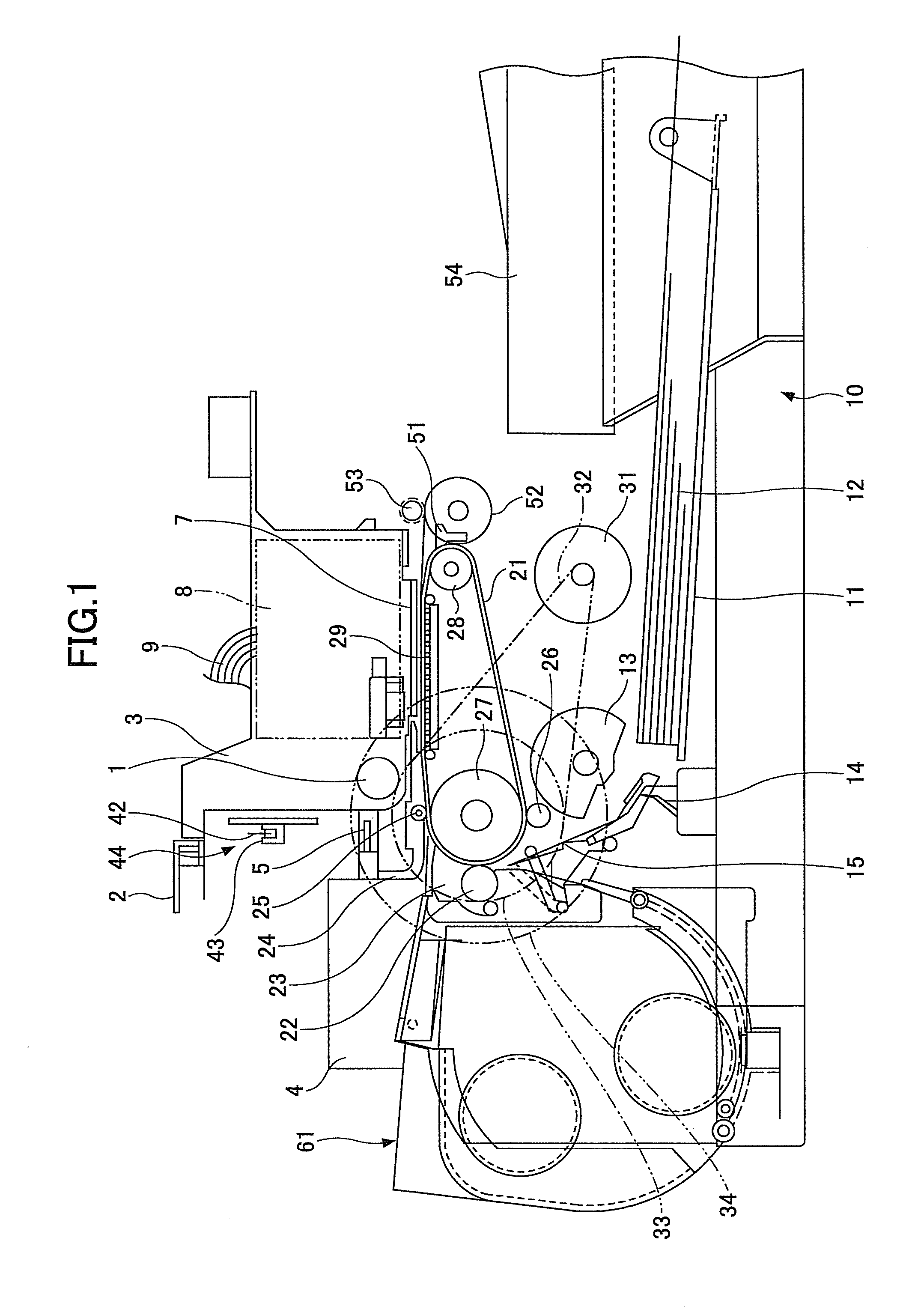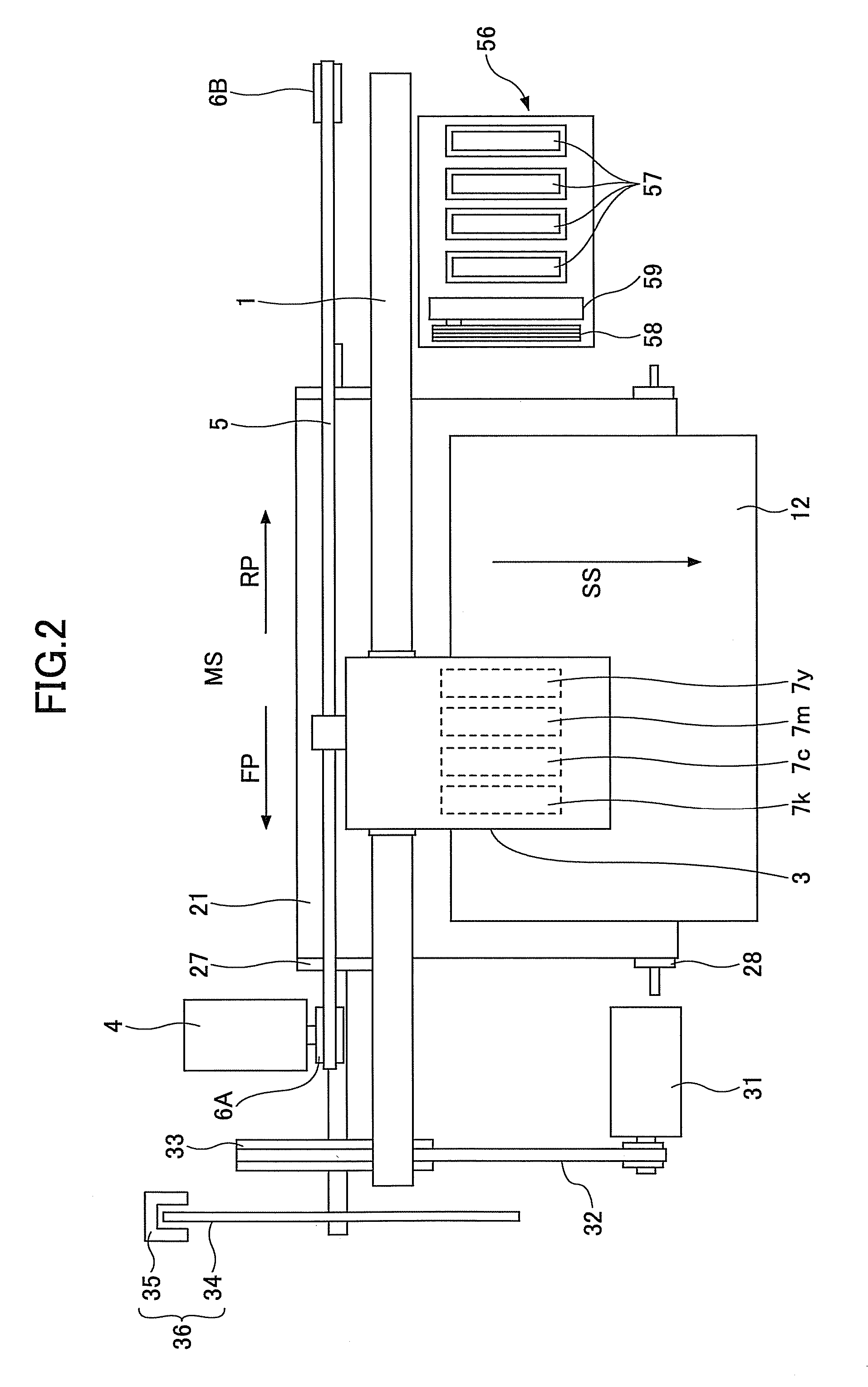Image forming apparatus, image forming method and computer-readable storage medium
a technology of image forming and image, which is applied in the field of image forming apparatus, image forming method and computer-readable storage media, can solve the problems of reducing the practice of various systems employing ink-jet recording techniques, lines, unevenness or blur that may appear in the image formed on the recording medium, and generating lines, unevenness or blur in the image, etc., to reduce the difference of head driving frequency, suppress banding, and suppress banding
- Summary
- Abstract
- Description
- Claims
- Application Information
AI Technical Summary
Benefits of technology
Problems solved by technology
Method used
Image
Examples
first embodiment
[0055]FIG. 1 is a side view illustrating a structure of an image forming apparatus in a first embodiment of the present invention, and FIG. 2 is a plan view illustrating a structure of the image forming apparatus. The image forming apparatus includes a guide rod 1 and a guide rail 2, which form guide members, and are provided across right and left side plates (not illustrated). A carriage 3 is slidably supported by the guide rod 1 and the guide rail 2, and is free to slide in a main scan direction MS. The carriage 3 is driven by a main scan motor 4 via a timing belt 5 that is provided across a driving pulley 6A and a following pulley 6B, and moves and scans in the main scan direction MS in a forward path FP or a reverse path RP. The main scan motor 4, the timing belt 5, and the pulleys 6A and 6B form a recording head scan part (or recording head scan means).
[0056]Four recording heads 7y, 7c, 7m and 7k, respectively formed by ink-jet heads having nozzles for jetting yellow (Y), cyan ...
second embodiment
[0193]Next, a description will be given of the image forming apparatus in a second embodiment of the present invention. In this second embodiment, the recording rate of the dots within the overlapping region A is set smaller towards one end (or boundary) of the overlapping region A along the sub scan direction SS. In addition, the number of consecutive dots recorded in the main scan direction MS within the overlapping region A is set smaller towards one end (or boundary) of the overlapping region A along the sub scan direction SS. The sub scan direction SS matches a longitudinal direction of the recording head 7 in which the nozzles are arranged.
[0194]FIGS. 24A and 248 is a diagram illustrating examples in which the dot recording rate decreases towards one end in the sub scan direction SS. In FIGS. 24A and 248, H1P denotes the dots recorded on the recording medium 12 by the head H1, H2P denotes the dots recorded on the recording medium 12 by the head H2, and LRP denotes the landing ...
PUM
 Login to View More
Login to View More Abstract
Description
Claims
Application Information
 Login to View More
Login to View More - Generate Ideas
- Intellectual Property
- Life Sciences
- Materials
- Tech Scout
- Unparalleled Data Quality
- Higher Quality Content
- 60% Fewer Hallucinations
Browse by: Latest US Patents, China's latest patents, Technical Efficacy Thesaurus, Application Domain, Technology Topic, Popular Technical Reports.
© 2025 PatSnap. All rights reserved.Legal|Privacy policy|Modern Slavery Act Transparency Statement|Sitemap|About US| Contact US: help@patsnap.com



